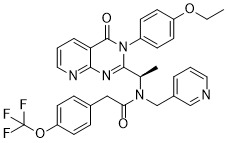Which had been maintained in LIF, to ensure the presence of fully pluripotent embryonic cells, and in the absence of LIF to allow enhanced differentiation of the embryonic cells in vitro. In all cases the ES cells produced teratomas when inoculated by themselves, regardless of the presence or absence of LIF in culture. When normal adult MEC were mixed with ES cells, mammary outgrowths were produced relatively often where ES cells had contributed progeny during the regeneration of the mammary epithelium. This was unaffected by the presence or absence of LIF in the medium the week before implantation. We speculate that interaction of ES cells with mammary epithelial cells leads to differentiation of the ES cells towards a mammary epithelial cell fate. Our evidence suggests that ES cells differentiate into both luminal and basal mammary epithelial cells. Recent publications indicate that both luminal and basal mammary epithelial cells can contribute progeny to mammary epithelial outgrowths upon transplantation. Thus interaction of ES cells with either luminal or basal mammary epithelium may result in their differentiation along these distinct mammary epithelial cell fates. Our results indicate that interaction of ES cells with each other in the context of the mammary fat pad often leads to tumorigenesis. Fragments of the original chimeric mammary outgrowths were implanted to form second-generation transplants. The ES cell progeny continued to behave as non-tumorigenic mammary epithelial cells and contributed to all portions of developing glands. These results were interpreted to mean that the ES cells were able to stably occupy the reformed niches in the regenerated mammary gland, and function within these niches to give rise to fully differentiated progeny during secondary growth, and be selfrenewed and persist in second transplant generations in the absence of teratoma formation. When ES cells were allowed to differentiate in culture, there was no effect on the tumorigenic potential of ES cells, or the transcriptome of the resulting teratomas. There was also no statistically significant effect on the ability of the mammary microenvironment to induce ES cell differentiation to a mammary epithelial cell fate. It is possible further differentiation of ES cells may affect reprogramming efficiency, but it is clear from these results that interaction with the regenerating mammary microenvironment is, in most cases, nonphosphorylated- peptides distinguished associate cten sh2 sufficient to direct ES cells to adopt a mammary epithelial cell fate and not teratomas. We did not observe an inhibition or suppression of ES cell tumorigenesis when ES cells were mixed with MEC at a 1:1 ratio. We hypothesize that interaction between ES cells leads to a rapid production of teratoma, which overgrows any evidence for mammary outgrowth. As the  ratio between ES cells and MEC is decreased to 1:5 or 1:50 the chances that ES cells interact with MEC is increased and their interaction with other ES cells is decreased. We hypothesize that this interaction is important to tumor suppression. Efficient protein translation requires an accurate biogenesis of the ribosomes, which consists of a complex series of processes. It begins with the transcription of rRNA precursors from the seven rrn operons which undergo nucleolytic processing by RNases to generate the mature rrn molecules. The final steps of rRNA maturation occur in the early stages of protein synthesis by the newly-assembled ribosome. Transcription of the rrn genes is regulated mainly at the level of transcription initiation but further control involves an antitermination system which overcomes rho- dependent transcriptional terminators located along the rrn operon. This system prevents transcriptional polarity of the rrn operon and insures that all three RNA species are transcribed in equal amounts.
ratio between ES cells and MEC is decreased to 1:5 or 1:50 the chances that ES cells interact with MEC is increased and their interaction with other ES cells is decreased. We hypothesize that this interaction is important to tumor suppression. Efficient protein translation requires an accurate biogenesis of the ribosomes, which consists of a complex series of processes. It begins with the transcription of rRNA precursors from the seven rrn operons which undergo nucleolytic processing by RNases to generate the mature rrn molecules. The final steps of rRNA maturation occur in the early stages of protein synthesis by the newly-assembled ribosome. Transcription of the rrn genes is regulated mainly at the level of transcription initiation but further control involves an antitermination system which overcomes rho- dependent transcriptional terminators located along the rrn operon. This system prevents transcriptional polarity of the rrn operon and insures that all three RNA species are transcribed in equal amounts.